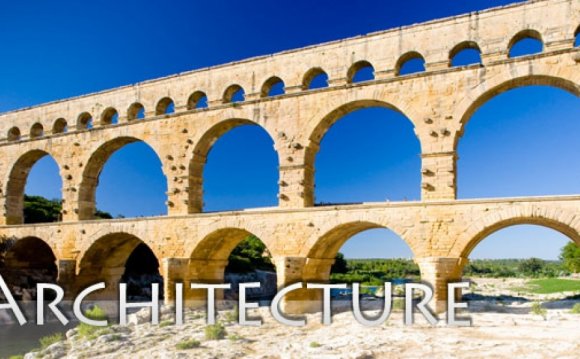
Rome is located on the Western shore of Italy (a peninsula which is shaped like a lady's spike-heeled boot), dividing the Adriatic Sea to the east and the Mediterranean to the southwest. Located on the banks of the Tiber River, the city had excellent access to the sea and trade routes. The Mediterranean waters also were effective in holding the sun's rays during all seasons of the year, and releasing its warmth to the surrounding lands each winter. The location had great potential for the city destined to become the seat of the world empire. The ocean provided easy access to surrounding lands, which would become Rome's colonies. Roman armies conquered ancient Greece, then travelled to the far reaches of Europe, North Africa, and the Asia Minor, leaving Roman colonies in its wake. At the height of the Roman Empire, "all roads lead to Rome" was a true statement, because they built the roads. One can still find evidence of Roman architecture and engineering from England to Egypt. Roman Achievements in Architecture, Engineering, and City Planning
The Colosseum The Colosseum is perhaps the most famous of Roman architectural ruins. Its immense size, covering six acres and accommodating 50, 000 spectators, is enough reason for its fame. What it was used for is perhaps even more note-worthy, as we know that this is where bloody fights between exotic animals and gladiators occured. A complex system of pipes drained the blood-bathed stadium floor.. The picture at right shows the underground tunnels beneath the floor of the stadium. The wild animals were contained here until the big event. There were 80 doorways allowing the huge crowds quick entrance and exit from the stadium. The columns which are spaced between each of the arches imitate progression of Greek orders: the Doric columns are on the first floor, the Ionic on the second, and the Corinthian on the third. The uppermost level of the structure once held pillars which held a giant canopy to shield the spectators from the sun. Lower class citizens sat close to the canopy, where it was hottest. Some more facts about the Colosseum. The Pantheon The Pantheon was the first temple to combine concrete construction with the decorative use of Greek classical orders. The building is an immense cylinder topped with a dome. The structure is 142 feet high and 140 feet across, making an almost hemispherical interior. There is a 29 foot wide oculus (eye) at the top, allowing ventillation and light to enter. A dome of this size would not have been possible without the Roman invention of concrete. The cross-section shows how the walls of the dome became thinner as they reached the oculus, preventing collapse from the weight. The invention of coffers (recessed blocks) also achieved this aim. Seven niches surrounding the base of the dome originally held statues of their gods. The Pantheon is now a Christian church called Santa Maria della Rotonda. The pagan statues were removed and replaced with Christian saints, and the half-dome above the altar is covered with Christian crosses. Roman Mosaics
A mosaic is created by assembling small pieces of tile, glass, or stone into a mortar background, forming a pattern or picture. The Romans followed the Greek tradition in creating this form of art, probably beginning in the 3rd or 4th century. Theirs consisted of cut stones, and were usually used for floors. Subjects included depictions of their gods, legendary heroes of Greek and Roman literature, depictions of daily life, and images of nature. More Ancient Mosaics
| |||||||||||









